
Scholarly Literature
This is a database of scholarly literature that concentrates currently on natural and engineered selfish genetic elements (gene drives). The latest are shown here.
Disclaimer>

|
Gene drives for invasive wasp control: Extinction is unlikely, with suppression dependent on dispersal and growth ratesP. J. Lester, D. O'Sullivan and G. L. W. Perry, Ecological Applications, 2023.
Abstract Gene drives offer a potentially revolutionary method for pest control over large spatial extents. These genetic modifications spread deleterious variants through a population and have been proposed as methods for pest suppression or even eradication. We examined the ... Keywords: Aedes aegypti, optimal control, wolbachia |

|
Proliferation and dissemination of killer meiotic drive lociE. C. Lai and A. A. Vogan, Current Opinion in Genetics and Development, 82:102100. 2023.
Killer meiotic drive elements are selfish genetic entities that manipulate the sexual cycle to promote their own inheritance via destructive means. Two broad classes are sperm killers, typical of animals and plants, and spore killers, which are present in ascomycete fungi. Killer ... Keywords: Aedes aegypti, optimal control, wolbachia |
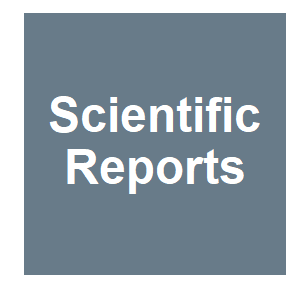
|
Wolbachia has subtle effects on thermal preference in highly inbred Drosophila melanogaster which vary with life stage and environmental conditionsA. Strunov, C. Schoenherr and M. Kapun, Scientific Reports, 13:13792. 2023.
Temperature fluctuations are challenging for ectotherms which are not able to regulate body temperature by physiological means and thus have to adjust their thermal environment via behavior. However, little is yet known about whether microbial symbionts influence thermal ... Keywords: Aedes aegypti, optimal control, wolbachia |
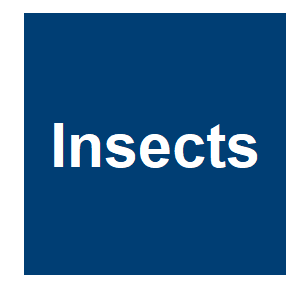
|
Effect of the Sterile Insect Technique and Augmentative Parasitoid Releases in a Fruit Fly Suppression Program in Mango-Producing Areas of Southeast MexicoJ. Cancino, P. Montoya, F. O. Gálvez, C. Gálvez and P. Liedo, Insects, 14. 2023.
The Sterile Insect Technique (SIT), by means of sterile male releases of Anastrepha ludens (Loew), coupled with Augmentative Biological Control (ABC), by releasing the parasitoid Diachasmimorpha longicaudata (Ashmead), was evaluated in a commercial mango production area for one ... Keywords: Aedes aegypti, optimal control, wolbachia |

|
The impact of predators of mosquito larvae on Wolbachia spreading dynamicsZ. Zhu, Y. Hui and L. Hu, Journal of Biological Dynamics, 17:2249024. 2023.
Dengue fever creates more than 390 million cases worldwide yearly. The most effective way to deal with this mosquito-borne disease is to control the vectors. In this work we consider two weapons, the endosymbiotic bacteria Wolbachia and predators of mosquito larvae, for combating ... Keywords: Aedes aegypti, optimal control, wolbachia |
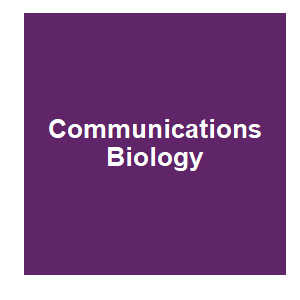
|
wMel Wolbachia alters female post-mating behaviors and physiology in the dengue vector mosquito Aedes aegyptiJ. Osorio, S. Villa-Arias, C. Camargo, L. F. Ramírez-Sánchez, L. M. Barrientos, C. Bedoya, G. Rúa-Uribe, S. Dorus, C. Alfonso-Parra and F. W. Avila, Communications Biology, 6:865. 2023.
Globally invasive Aedes aegypti disseminate numerous arboviruses that impact human health. One promising method to control Ae. aegypti populations is transinfection with Wolbachia pipientis, which naturally infects ~40–52% of insects but not Ae. aegypti. Transinfection of Ae. ... Keywords: Aedes aegypti, optimal control, wolbachia |
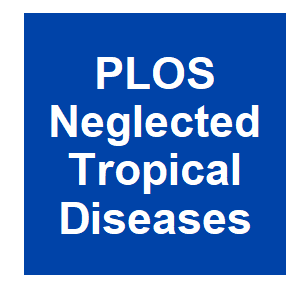
|
Optimizing the delivery of self-disseminating vaccines in fluctuating wildlife populationsC. Schreiner, A. Basinski, C. Remien and S. Nuismer, PLOS Neglected Tropical Diseases, 17:e0011018. 2023.
Author summary Pathogens such as Ebola, rabies, and Lassa virus that usually infect wildlife can jump to the human population. In the worst case, this can lead to outbreaks or pandemics such as happened in 2014 with Ebola and 2019 with SARS-CoV-2. One approach to mitigate the ... Keywords: Aedes aegypti, optimal control, wolbachia |

|
Wolbachia infection at least partially rescues the fertility and ovary defects of several new Drosophila melanogaster bag of marbles protein-coding mutantsW. Miwa and F. A. Charles, bioRxiv, 2023.03.20.532813. 2023.
The D. melanogaster protein coding gene bag of marbles (bam) plays a key role in early male and female reproduction by forming complexes with partner proteins to promote differentiation in gametogenesis. Like another germline gene, Sex lethal, bam genetically interacts with the ... Keywords: Aedes aegypti, optimal control, wolbachia |

|
Single-cell profiling of Anopheles gambiae spermatogenesis defines the onset of meiotic silencing and premeiotic overexpression of the X chromosomeN. Page, C. Taxiarchi, D. Tonge, J. Kuburic, E. Chesters, A. Kriezis, K. Kyrou, L. Game, T. Nolan and R. Galizi, Commun Biol, 6:850. 2023.
Understanding development and genetic regulation in the Anopheles gambiae germline is essential to engineer effective genetic control strategies targeting this malaria mosquito vector. These include targeting the germline to induce sterility or using regulatory sequences to drive ... Keywords: Aedes aegypti, optimal control, wolbachia |

|
Bioinformatic and literature assessment of toxicity and allergenicity of a CRISPR-Cas9 engineered gene drive to control Anopheles gambiae the mosquito vector of human malariaA. Qureshi and J. B. Connolly, Malaria Journal, 22:234. 2023.
Population suppression gene drive is currently being evaluated, including via environmental risk assessment (ERA), for malaria vector control. One such gene drive involves the dsxFCRISPRh transgene encoding (i) hCas9 endonuclease, (ii) T1 guide RNA (gRNA) targeting the doublesex ... Keywords: Aedes aegypti, optimal control, wolbachia |
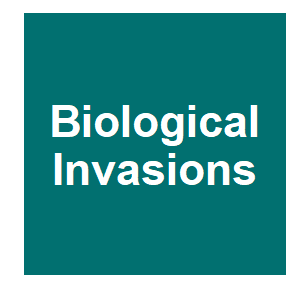
|
Assessing the suitability of YY males and ZZ females as an invasive species population control method across life historiesR. A. Erickson, H. M. Thompson, S. A. Kageyama, G. M. Andriacchi, A. R. Cupp, R. Patiño and J. J. Amberg, Biological Invasions, 25:3737-3751. 2023.
Natural resource managers use tools to control invasive species. In theory, stocking YY males or ZZ females would allow managers to skew sex ratios until populations collapse. In combination with other suppression methods, such as removal, this approach could be incorporated into ... Keywords: Aedes aegypti, optimal control, wolbachia |

|
Paternal genome elimination: patterns and mechanisms of drive and silencingM. Herbette and L. Ross, Current Opinion in Genetics and Development, 81. 2023.
In thousands of arthropod species, males inherit, but subsequently eliminate the entire haploid genome of their father. However, why this peculiar reproductive strategy evolved repeatedly across diverse species and what mechanisms are involved in paternal genome elimination (PGE) ... Keywords: Aedes aegypti, optimal control, wolbachia |
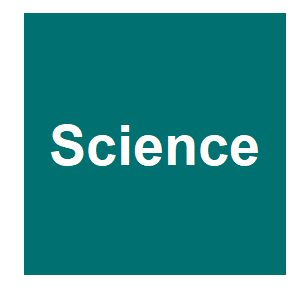
|
Delftia tsuruhatensis TC1 symbiont suppresses malaria transmission by anopheline mosquitoesW. Huang, J. Rodrigues, E. Bilgo, J. R. Tormo, J. D. Challenger, C. De Cozar-Gallardo, I. Pérez-Victoria, F. Reyes, P. Castañeda-Casado, E. J. Gnambani, D. F. d. S. Hien, M. Konkobo, B. Urones, I. Coppens, A. Mendoza-Losana, L. Ballell, A. Diabate, T. S., Science, 381:533-540. 2023.
Malaria control demands the development of a wide range of complementary strategies. We describe the properties of a naturally occurring, non?genetically modified symbiotic bacterium, Delftia tsuruhatensis TC1, which was isolated from mosquitoes incapable of sustaining the ... Keywords: Aedes aegypti, optimal control, wolbachia |

|
Suppression Trial through an Integrated Vector Management of Aedes albopictus (Skuse) Based on the Sterile Insect Technique in a Non-Isolated Area in SpainC. Tur, D. Almenar, M. Zacarés, S. Benlloch-Navarro, I. Pla and V. Dalmau, Insects, 14. 2023.
In recent years, Aedes albopictus (Skuse, 1984) has expanded its distribution globally due to its high ecological plasticity. This expansion has increased the population’s susceptibility to contracting diseases such as dengue, Zika, and chikungunya, among others, which are ... Keywords: Aedes aegypti, optimal control, wolbachia |

|
wMel replacement of dengue-competent mosquitoes is robust to near-term changeV. N. Vásquez, L. M. Kueppers, G. Rašić and J. M. Marshall, Nature Climate Change, 13:848-855. 2023.
Rising temperatures are impacting the range and prevalence of mosquito-borne diseases. A promising biocontrol technology replaces wild mosquitoes with those carrying the virus-blocking Wolbachia bacterium. Because the most widely used strain, wMel, is adversely affected by heat ... Keywords: Aedes aegypti, optimal control, wolbachia |

|
Susceptibility of Wolbachia mosquito control to temperature shiftsE. P. Caragata, Nature Climate Change, 13:767-768. 2023.
Vásquez and colleagues consider the potential impacts of increasing and variable temperatures on Wolbachia-based population-replacement interventions. Previous laboratory experiments have highlighted the temperature-sensitive nature of Wolbachia, with high average daily ... Keywords: Aedes aegypti, optimal control, wolbachia |
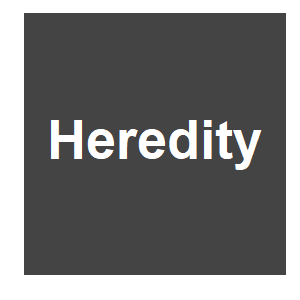
|
Ability of a selfish B chromosome to evade genome elimination in the jewel wasp, Nasonia vitripennisH. Lee, P. Seo, S. Teklay, E. Yuguchi, E. D. Benetta, J. H. Werren and P. M. Ferree, Heredity, 2023.
B chromosomes are non-essential, extra chromosomes that can exhibit transmission-enhancing behaviors, including meiotic drive, mitotic drive, and induction of genome elimination, in plants and animals. A fundamental but poorly understood question is what characteristics allow B ... Keywords: Aedes aegypti, optimal control, wolbachia |

|
X chromosome drive is constrained by sexual selection and influences ornament evolutionK. A. Paczolt, G. T. Welsh and G. S. Wilkinson, Proceedings of the Royal Society B: Biological Sciences, 290:20230929. 2023.
Experimental evolution provides an integrative method for revealing complex interactions among evolutionary processes. One such interaction involves sex-linked selfish genetic elements and sexual selection. X-linked segregation distorters, a type of selfish genetic element, ... Keywords: Aedes aegypti, optimal control, wolbachia |

|
Effects of γ-Irradiation on Mating Behavior of Red Palm Weevil, Rhynchophorus ferrugineus (Olivier, 1790) (Coleoptera: Dryophthoridae)M. Cristofaro, C. Fornari, F. Mariani, A. Cemmi, M. Guedj, M. L. Ben Jamaa, M. Msaad Guerfali, E. Tabone, R. Castellana, R. Sasso and S. Musmeci, Insects, 14. 2023.
Red palm weevil (RPW) Rhynchophorus ferrugineus (Olivier 1790) is a highly invasive species originating from Southeast Asia and Melanesia. Over the past 30 years, this alien pest has spread extensively in the Middle East and the Mediterranean basin. Its endophagous larvae feed on ... Keywords: Aedes aegypti, optimal control, wolbachia |

|
First Detection and Genetic Identification of Wolbachia Endosymbiont in Field-Caught Aedes aegypti (Diptera: Culicidae) Mosquitoes Collected from Southern TaiwanL.-L. Chao and C.-M. Shih, Microorganisms, 11. 2023.
The prevalence and genetic character of Wolbachia endosymbionts in field-collected Aedes aegypti mosquitoes were examined for the first time in Taiwan. A total of 665 Ae. aegypti were screened for Wolbachia infection using a PCR assay targeting the Wolbachia surface protein (wsp) ... Keywords: Aedes aegypti, optimal control, wolbachia |

Contact
David O’Brochta
Foundation for the
National Institutes of Health
geneconvenevi@fnih.org
RSS

